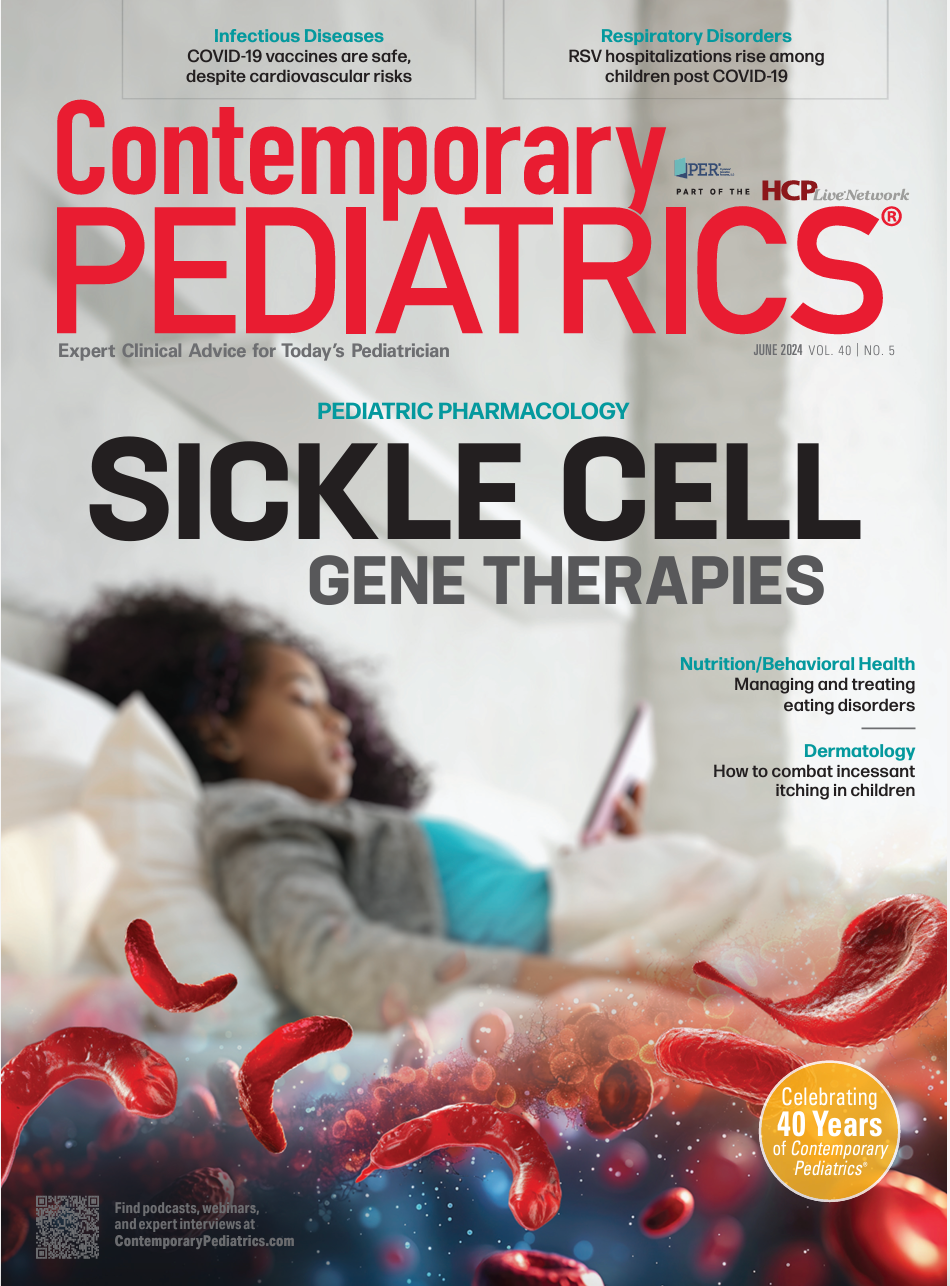What to expect in the June issue of Contemporary Pediatrics
Editor-in-chief Tina Tan, MD, FAAP, FIDSA, FPIDS, highlights the June 2024 issue of Contemporary Pediatrics.
The June 2024 issue of Contemporary Pediatrics is now available in digital form! Below, find a message from our Editor in Chief Tina Tan, MD, FAAP, FIDSA, FPIDS, who highlights articles featured in this month's issue.
Click here, or on the cover image to read the June issue of Contemporary Pediatrics.
Tina Tan, MD, FAAP, FIDSA, FPIDS:
Happy summer!
An update on highly pathogenic avian influenza A H5N1 (HPAI) bird flu. In the United States, the virus has been spreading among herds of dairy cows in 9 states, to date.1 Pasteurization neutralizes the virus. Even though human infection with HPAI viruses is uncommon, for those patients who drink raw milk and eat unpasteurized dairy products, this may increase their risk. Please advise them that this is a time to refrain as there are several other infectious agents that can cause serious infections from ingesting unpasteurized products.
There are several excellent must-read articles in this month’s issue. They include:
- The Pediatric Pharmacology section cover article reviews the latest developments in gene cell therapy for sickle cell disease in children. This includes 2 of the newest therapies: exagamglogene autotemcel (Casgevy) and lovotibeglogene autotemcel (Lyfgenia). This is a great development, as the National Institutes of Health estimates that about 1 in 365 Black or African American babies are born with sickle cell disease in the United States.2
- The Infectious Diseases section article provides an excellent review of a study that looked at COVID-19 vaccines in children with a focus on the safety of the vaccines. These vaccines are safe and effective. Currently the dominant COVID-19 Omicron subvariants circulating in the US are JN.1 and the FLiRT family of variants, including KP.2 (accounting for >28% of cases) and KP.1.1. The most common symptoms in all age groups are chronic cough, fever, runny nose, and sore throat. Public health officials are concerned that a summertime surge of COVID-19 infections may be seen as many people are not up to date on their vaccines or are unvaccinated, and are hesitant to test for COVID-19 when they are ill.
- The Nutrition section article features a discussion from the National Association of Pediatric Nurse Practitioners Conference that reviews the management and treatment of eating disorders and provides practical tips on signs and symptoms, treatment plans, and management for the general pediatric provider. This is very timely information as eating disorders in children and teenagers have significantly increased around the world, with an estimated 1 in 5 children and teenagers showing signs of disordered eating.3
- The Respiratory Disorders section article provides a recap of a study showing that respiratory syncytial virus hospitalizations have quadrupled among young children after the COVID-19 pandemic, with an increase in the age of the children being hospitalized.
- The Your Voice column provides practical information for the general pediatric provider on pediatric palliative care. The authors provide very useful information on care coordination, symptom management, and when to contact a palliative care specialist.
As always, thank you for providing outstanding care to your patients. As Remez Sasson said, “May all your days be bright, full of light, like a beautiful sunny day.” Please make time to take care of yourselves and enjoy the summer. Please stay safe and well. And, as always, I welcome your suggestions, comments, and questions.
With warm regards,
Tina Q. Tan, MD, FAAP, FIDSA, FPIDS
Editor in Chief
References:
- Avian influenza current situation summary. Centers for Disease Control and Prevention. Published May 17, 2024. Accessed May 21, 2024. https://www.cdc.gov/flu/avianflu/avian-flu-summary.htm
- Data and statistics on sickle cell disease. Sickle Cell Disease (SCD). Published May 6, 2024. Accessed May 21, 2024. https://www.cdc.gov/sickle-cell/data/index.html
- Eating disorder statistics. National association of anorexia nervosa and associated disorders. Published November 29, 2023. Accessed May 21, 2024. https://anad.org/eating-disorder-statistic/

The Role of the Healthcare Provider Community in Increasing Public Awareness of RSV in All Infants
April 2nd 2022Scott Kober sits down with Dr. Joseph Domachowske, Professor of Pediatrics, Professor of Microbiology and Immunology, and Director of the Global Maternal-Child and Pediatric Health Program at the SUNY Upstate Medical University.